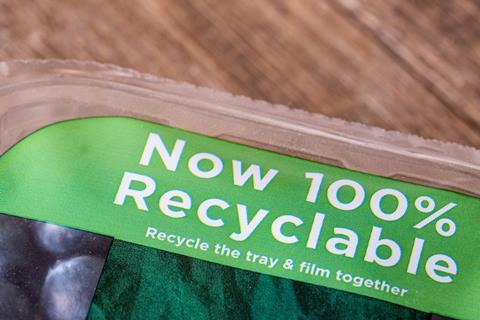
Packaging sustainability is back in the headlines. Already this year, Upfield has revealed the “world’s first” plastic-free recyclable tub and Sainsbury’s has switched its punnets from plastic to cardboard.
However, many chief sustainability officers find themselves confronting the formidable task of addressing ‘sustainability’ in isolation. They may have been appointed by the board without the size and scale of team they need, or they may lack sufficient experience in what is still a relatively new position in a continually evolving space.
And yet, it’s evident that overcoming challenges – from keeping up with legislative changes and reporting requirements, to balancing costs and saving the planet – can’t be done alone. It needs to be a collaborative process.
Finding the right partners
First, that means building internal partnerships. Does the responsibility (and budget) for packaging sit with sustainability, or marketing, or the commercial team? Is it increasingly a CFO issue, given the move towards data-driven reporting and legislative compliance?
There is also often involvement from the CIO, given the disconnected architecture that comes with global technology systems. So sustainability heads have a lot of internal people they need to bring on side.
Then there are external partnerships. By pooling resources and expertise, fmcg brands can gain new insights. This could mean partnering with organisations such as the WWF or National Oceanography Centre, which play a significant role in building awareness and providing research to enable change.
These bodies can help brands stay ahead of legislative changes and help them influence and understand the future, with a following of members and partners willing to drive change. Partnerships might also involve those organisations that drive collaborative initiatives around the waste stream, such as the HolyGrail project.
Working with industry
Finally, there are partnerships with other brands. We’ve seen how the industry came together to agree to reduce the size and packaging of Easter eggs, for example, but there is also scope to collaborate in areas such as food waste and shelf life labelling.
Here, of course, we have to mention the retailers. Nothing happens without the agreement and contribution of the big supermarket chains, so they will have to be involved as well.
All parties must establish a shared vision, align their objectives and set clear, measurable goals. This transparent approach requires accurate real-time data to streamline efforts and ensure each partner contributes effectively towards the sustainability initiatives.
Given so many businesses still measure packaging sustainability retrospectively and annually, the need for live real-time data is paramount if any partnership is to work.
Engage for change
By leveraging collective insights, businesses can stay ahead of regulatory requirements and meet evolving consumer demands for eco-friendly packaging materials, including post-consumer recycled (PCR) materials.
There are a number of other opportunities, as long as the CSOs have enough power and decision-making capability to make them happen – and partners willing to assist. Food and drink brands sponsoring deposit return schemes and recycling bins in supermarket car parks might be one option.
It’s even possible to envisage a change in sourcing to increase the level of control brands and retailers have over their supply chain, with sole supplier and mandated supply programmes ensuring recyclable materials are used and can be traced.
The demand for sustainable solutions is not going away. But by coming together, internally as well as externally, fmcg businesses can understand that shift and work with it.



















No comments yet